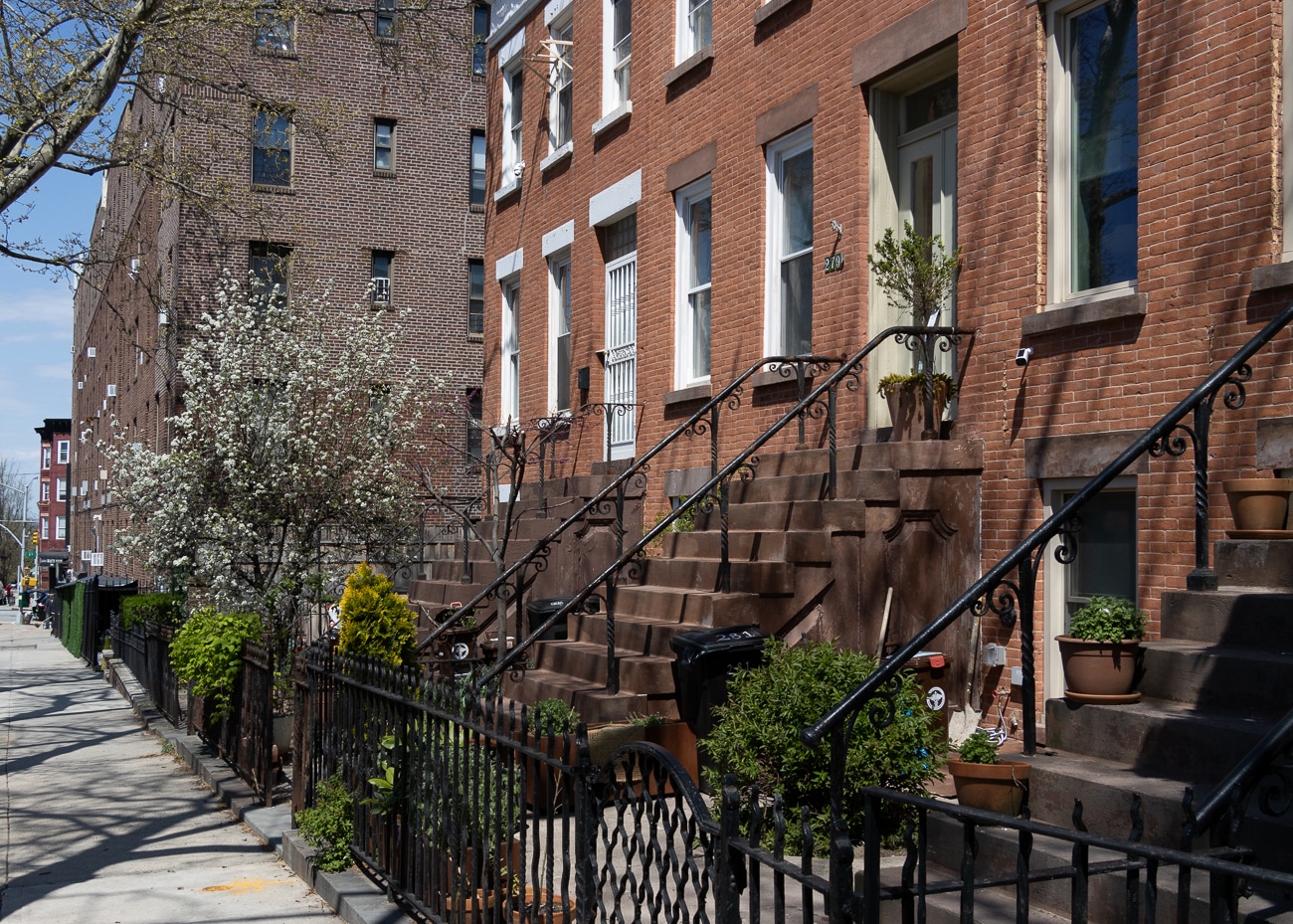Building of the Day: 19-29 Rogers Avenue (Grant Square)
Brooklyn, one building at a time. Name: Originally the Union League Club, then Unity Club, now Grant Square Senior Center Address: 19-29 Rogers Avenue (Grant Square) Cross Streets: Corner of Dean Street Neighborhood: Crown Heights North Year Built: 1889 Architectural Style: Romanesque Revival Architect: Peter J. Lauritzen Other buildings by architect: Offerman Building on Fulton…

Brooklyn, one building at a time.
Name: Originally the Union League Club, then Unity Club, now Grant Square Senior Center
Address: 19-29 Rogers Avenue (Grant Square)
Cross Streets: Corner of Dean Street
Neighborhood: Crown Heights North
Year Built: 1889
Architectural Style: Romanesque Revival
Architect: Peter J. Lauritzen
Other buildings by architect: Offerman Building on Fulton Street, Downtown, several firehouses, mansions in Crown Heights North, Bedford Stuyvesant and Williamsburg.
Landmarked: Yes, part of Crown Heights North, Phase 1 HD (2007)
The story: When Brownstoner reader “Amzi Hill” and I lead walking tours of Crown Heights North, we always start here, in front of the Union League Club, because this was the heart of social life in Bedford, and the St. Marks District. Grant Square still has a commanding presence, filled with large, impressive buildings by some of Brooklyn’s best architects: the 23rd Regiment Armory, the impressively gorgeous Imperial Apartments, the former Chatelaine Hotel, former Medical Society of the County of Kings building, and the former Union League Club, among them. What it must have been like when this area was one of the choice areas of Brooklyn.
Brooklyn’s Republicans ruled the city for much of the late 19th century, electing mayors, congressmen, and other powerful city and state positions. Most of the prominent businessmen of the day were Republicans, as were her military men. Powerful men need a place to gather, have rallies, choose candidates for office, and generally kick back with like-minded men, so in 1889, Peter J. Lauritzen won the contest to design a new clubhouse, which would be a branch of the Union League Club.
The Club was a branch of an organization founded during the Civil War in Manhattan, by George Templeton Strong and Frederick Law Olmsted, among others. In an effort that would delight the hearts of any diehard secret society cabal lover, the Club was established to bring together the business, intellectual, scientific and other elite under one roof, to provide support, financial and otherwise to the Union. As the Civil War raged one, they saw themselves as a powerful force behind the scenes of government. After the war, Union League Clubs were established in other cities, and were influential in advancing progressive reforms and social causes. They were an interesting bunch, actually.
The architect they chose for the Brooklyn Club was Peter J. Lauritzen, a Danish-born architect, who had previously worked as a government architect in Washington DC, among his many other accomplishments. Here in Brooklyn, he had a stellar reputation as a designer of urban mansions for the rich, including several here in the neighborhood of the St. Marks District. His style usually incorporated elements of ornament prominently in his designs, so it is no wonder that his Union League Club took so well to the very American iconography that appears on it.
The building was also a technical marvel, with its own power plant and generator in the basement, capable of providing the structure with electricity at a time when most buildings were still transitioning from gas. The club once had a prominent observation tower, which gave observers a view of the Manhattan skyline, as well as much of Brooklyn. The most interesting part of the façade is near the entrance, with brownstone busts of Lincoln and Grant overlooking the statue of Grant, dedicated in 1896. It is one of William Ordway Partridge’s best.
The Union League Club had a large ballroom and meeting hall, a dining room, private dining and conference rooms, a library, guest rooms, card and game rooms, bathrooms, and more. A large kitchen and laundry facility was in the basement, a gymnasium was on the top floor. Also down in the basement were a shooting range and a bowling alley. The ballroom hosted many a political dinner with Brooklyn and national Republican bigwigs, including candidates for all kinds of office, as well as military and social leaders. The rooms could also be rented out for weddings and celebrations. My namesake, Montrose Morris, was a member, and was feted here one night for his accomplishments in architecture. Frederick Douglass and Booker T. Washington were also guest lecturers here.
Alas, it didn’t last. The Republicans lost their grip on Brooklyn, especially when the city merged with the rest of Greater New York, and power moved into Manhattan permanently. The club eventually merged with the Manhattan branch, and this building was sold to the Unity Club, a Jewish organization that would take over the building for many years, eventually establishing a yeshiva here. They lasted until the mid-1970s, when the building became a senior citizen’s center. GMAP
















What's Your Take? Leave a Comment